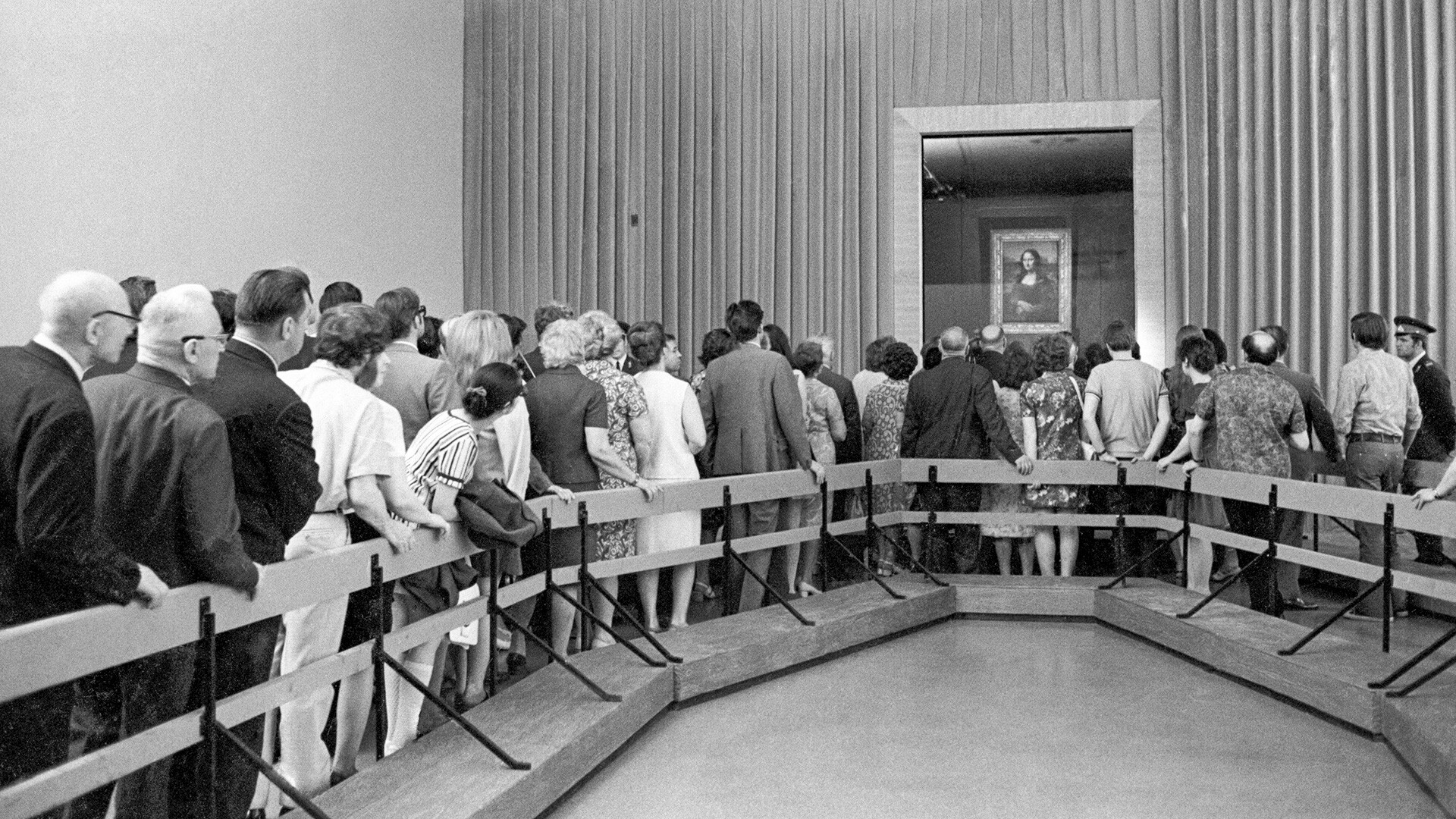
It happened in 1974, when Japanese Prime Minister Kakuei Tanaka allocated as much as $300 million to France to promote Japanese studies in the country. Part of this generous deal is said to have been a promise by French President Georges Pompidou to release the precious ‘Mona Lisa’ for exhibition in Japan.
Irina Antonova, director of the Pushkin Museum of Art in Moscow, learned that the painting would be returning to France, flying over Moscow. She then turned to Ekaterina Furtseva, the Minister of Culture of the USSR, with a request to help arrange an exhibition. And she promised to try to negotiate with the French ambassador, as, in her own words, he was in love with her.
So, the masterpiece arrived in the USSR and stayed there for 45 days. During this time, the ‘Mona Lisa’ was seen by 300 thousand people, many of whom stood in line for 7-8 hours to get into the museum.
The strictest conditions for preserving the painting were observed: temperature, humidity and, most importantly, safety. The exhibition passed without incident, with the exception of one episode. Feeling empathetic, one of the visitors threw a bouquet to Gioconda, which triggered an alarm. Armed guards immediately ran in, but, as soon as the situation cleared up, the woman was released.
Dear readers,
Our website and social media accounts are under threat of being restricted or banned, due to the current circumstances. So, to keep up with our latest content, simply do the following:
If using any of Russia Beyond's content, partly or in full, always provide an active hyperlink to the original material.
Subscribe
to our newsletter!
Get the week's best stories straight to your inbox